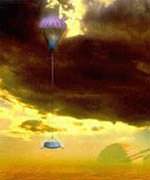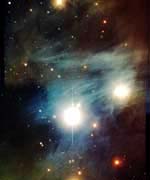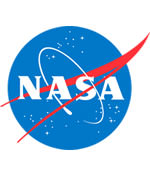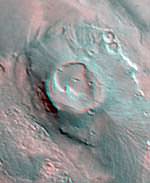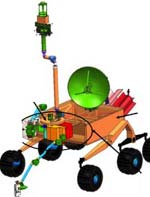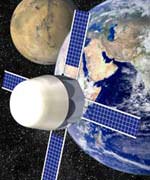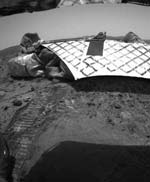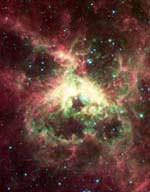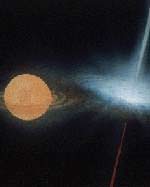
Image credit: NASA
Although they appreciated President Bush’s new space initiative, many space advocacy groups were a little disappointed that this return to the Moon will probably be fashioned in the same mold as previous NASA projects, such as the space shuttle and the International Space Station. The groups, such as the Space Frontier Foundation, believe that NASA should be restructured to involve the private sector at all levels, to “let NASA do the exploring, but leave the operations to those who do such things best ? American industry”.
The Space Frontier Foundation today applauded President George W. Bush’s unveiling of a plan to get NASA out of Earth orbit and on a path to the Moon and Mars, but the group said that unless there are major changes at the agency and in U.S. space policy ? including the private sector in a leadership role for example ? the plan will fail.
?It was an excellent speech, very inspiring, and if we can do the things the president listed, then we will be on a path to the stars,? said Rick Tumlinson of the Foundation, who was invited by the White House to attend the speech. ?Unfortunately the NASA of today can’t do what the president has asked of it within a reasonable budget, in a reasonable time and in a way that leads to permanent human expansion beyond the Earth.?
The Foundation believes that NASA must be radically re-structured and it must learn new ways of doing business if it is to succeed in accomplishing the President’s vision. The group is calling on the government to include the private sector in all levels of the program’s planning and development as a way to dramatically lower costs, and assure permanence once the Moon base is established. Examples include: buying payload services from new U.S. space transportation firms; the establishment of prizes to be awarded for certain activities and technological milestones; and for private companies to build and operate the long term habitats that will be needed after the initial base camps are established by government astronauts.
?If America is going to reach for the Moon and Mars, we should do it in an American way, by creating a true partnership between the public and private sectors,? said Tumlinson. ?Let NASA do the exploring, but leave the operations to those who do such things best ? American industry. Federal Express, Hilton, Southwest Airlines and their competitors have driven costs down while improving services on Earth, so let’s let them or their space equivalents do the same in space. It isn’t all rocket science.?
The Foundation is glad to see that NASA will be ?leaving Earth orbit? as the President declared, and is hopeful that this means the government will support the development of space businesses such as commercial space flight, space hotels and industrial research in the Near Frontier around the Earth by clearing away regulatory barriers and creating tax incentives and space enterprise zones to encourage investment. The organization believes that if this initiative is to really be the first step to the human settlement of space, it has to eventually pay for itself. Thus, the government should build towards that goal from the beginning.
?I was glad to hear the President say that ?human beings are headed into the cosmos,? but so far that has meant mainly government employees traveling on government vehicles to government buildings. If this is to succeed, we need to begin blazing a trail that can be eventually be taken by anyone who wants to go,? said Tumlinson. ?The government should handle exploration and science ?out there? and the private sector should handle business and entertainment in space. Together we really can open the ?Space Frontier? of which the President spoke.?
To help build this new alliance for the frontier, the Foundation will be holding its 5th Return to the Moon Conference in Las Vegas in July. The conference will be held July 16-18 and will include attendees from government and the private sector. Registration for the conference is at: https://www.space-frontier.org/Events/RTM5/.
Original Source: Space Frontier Foundation News Release

